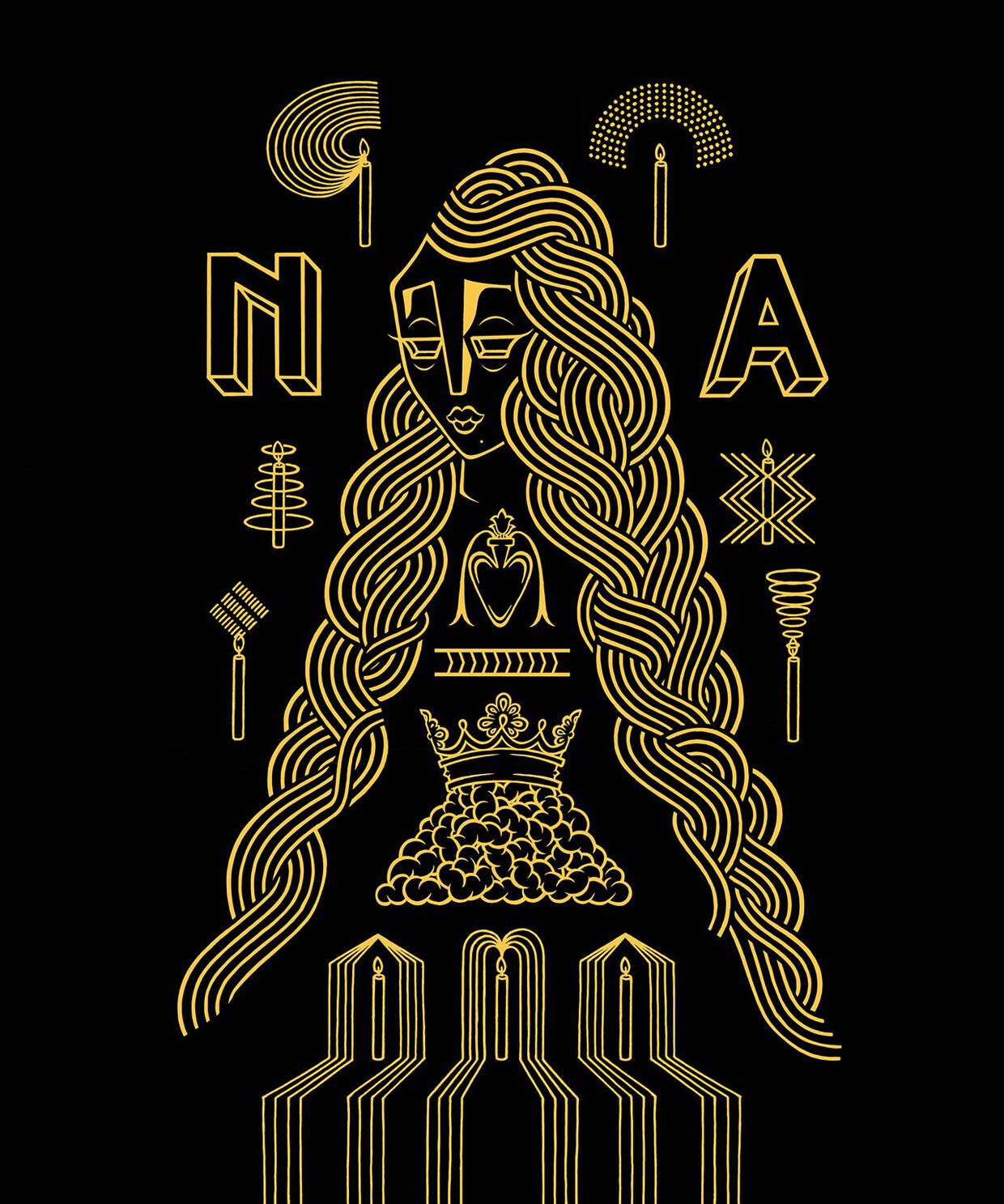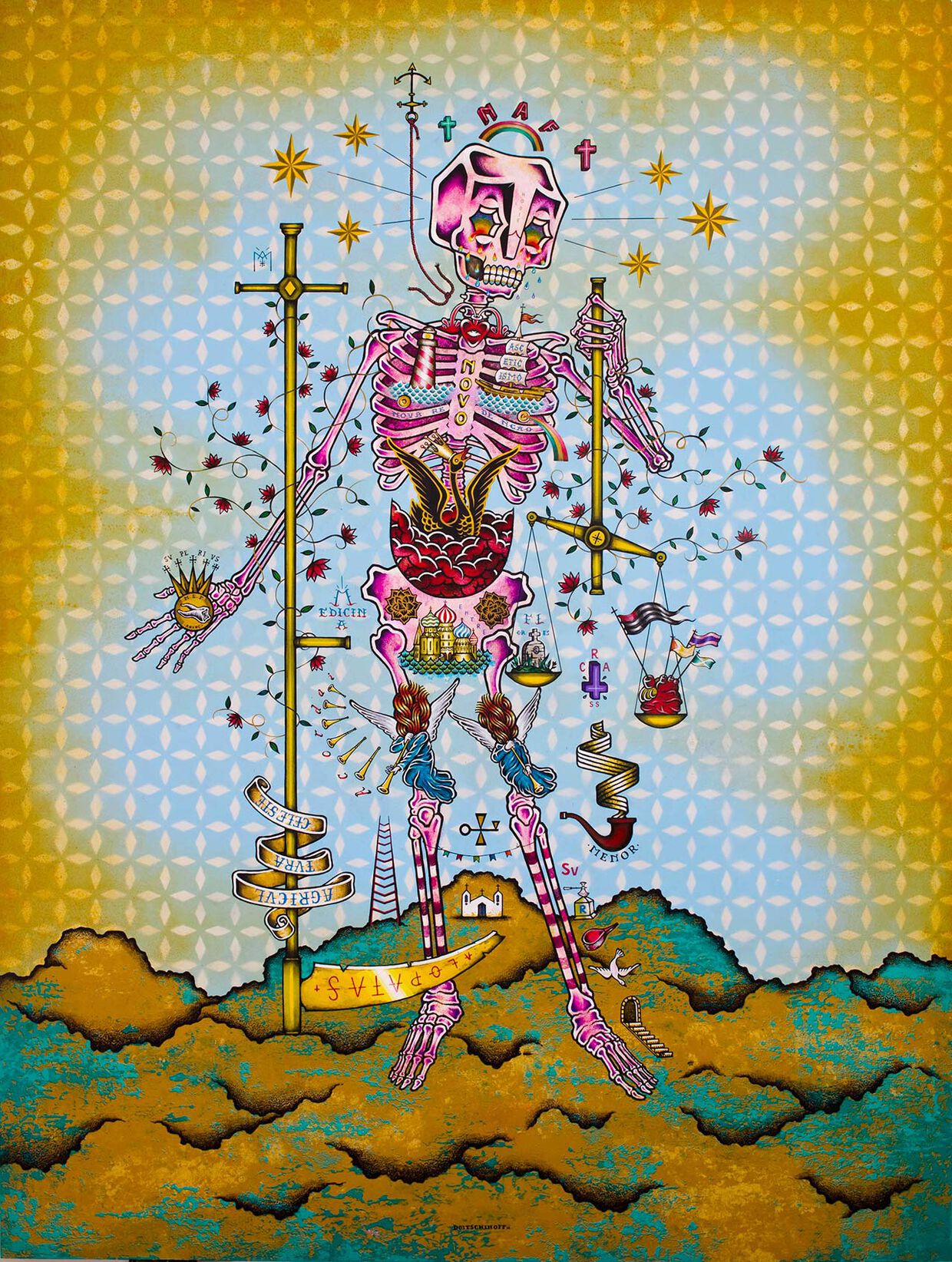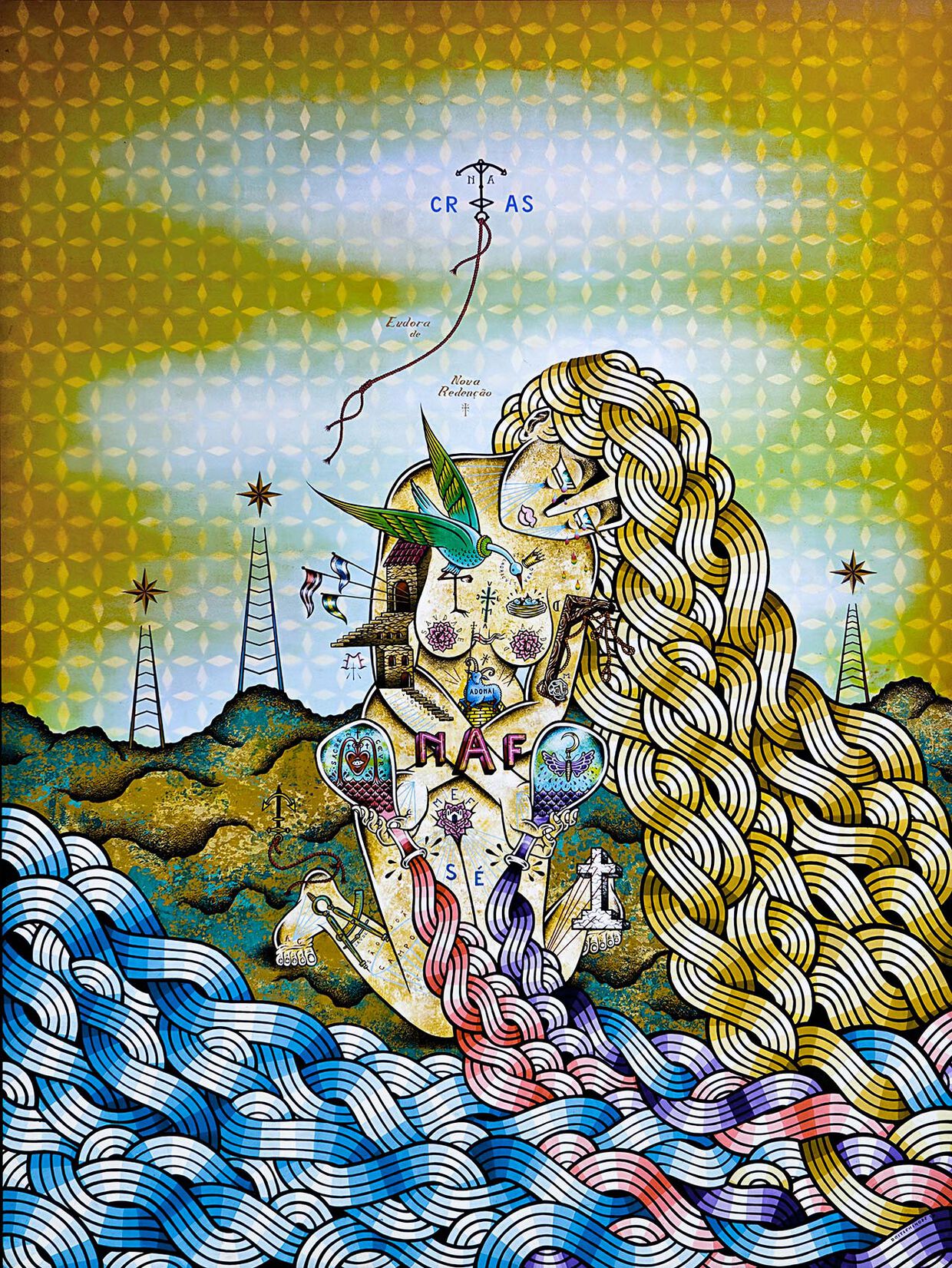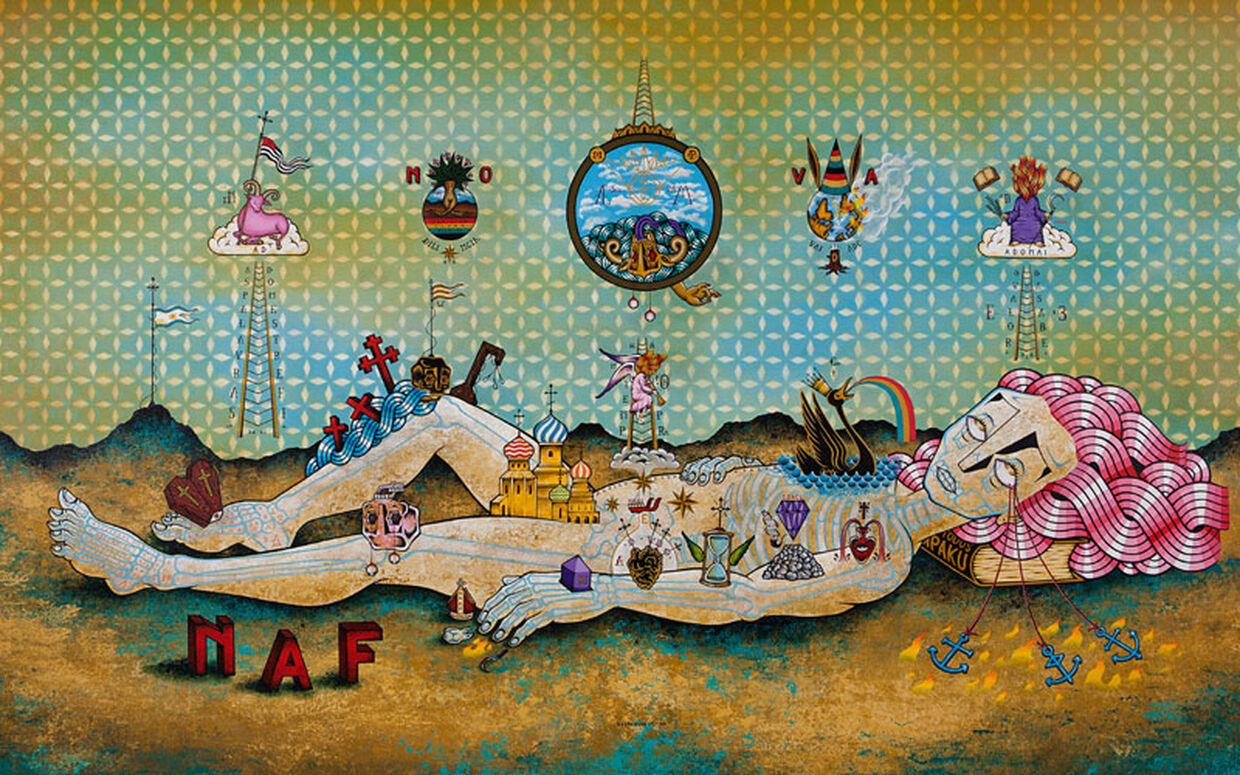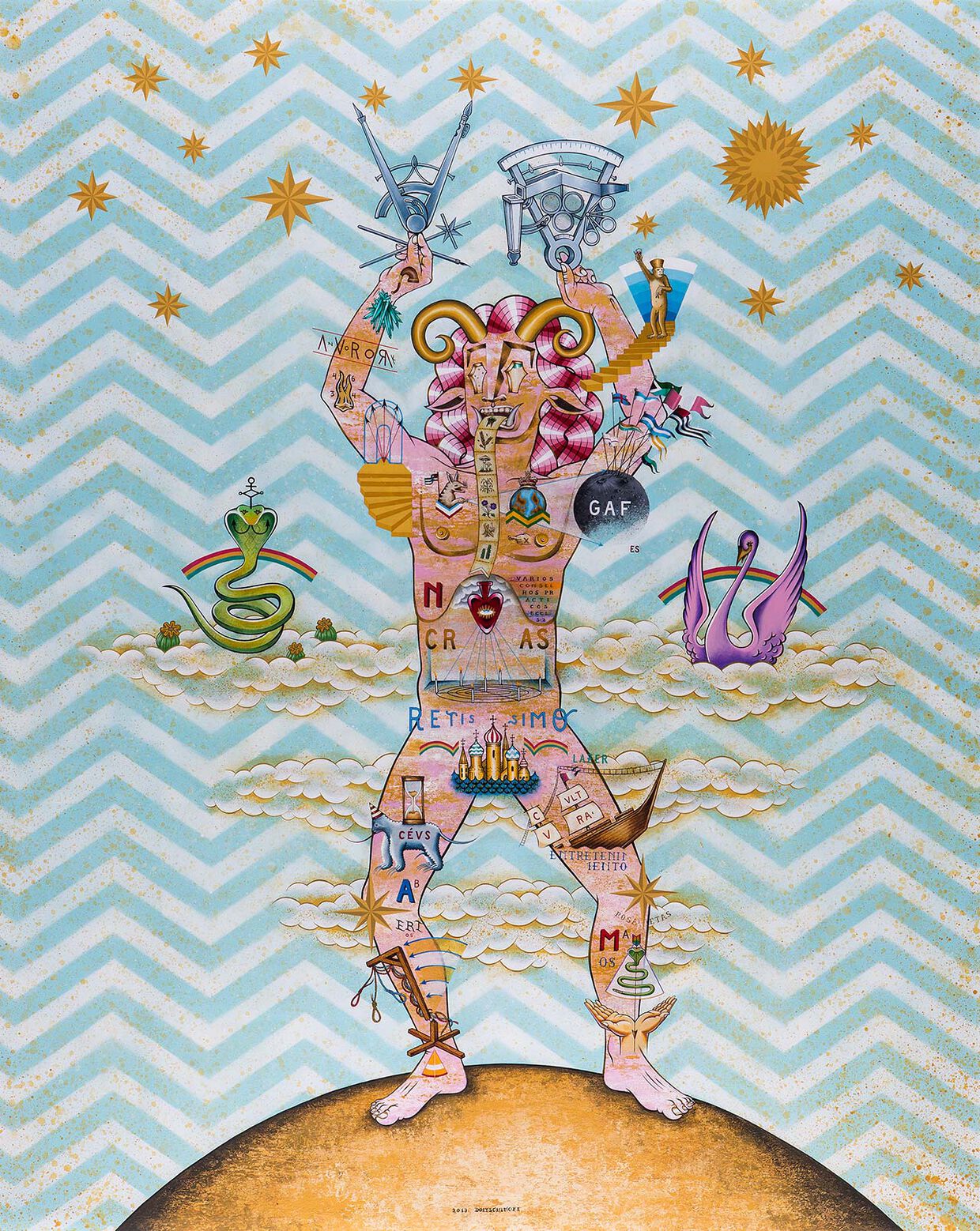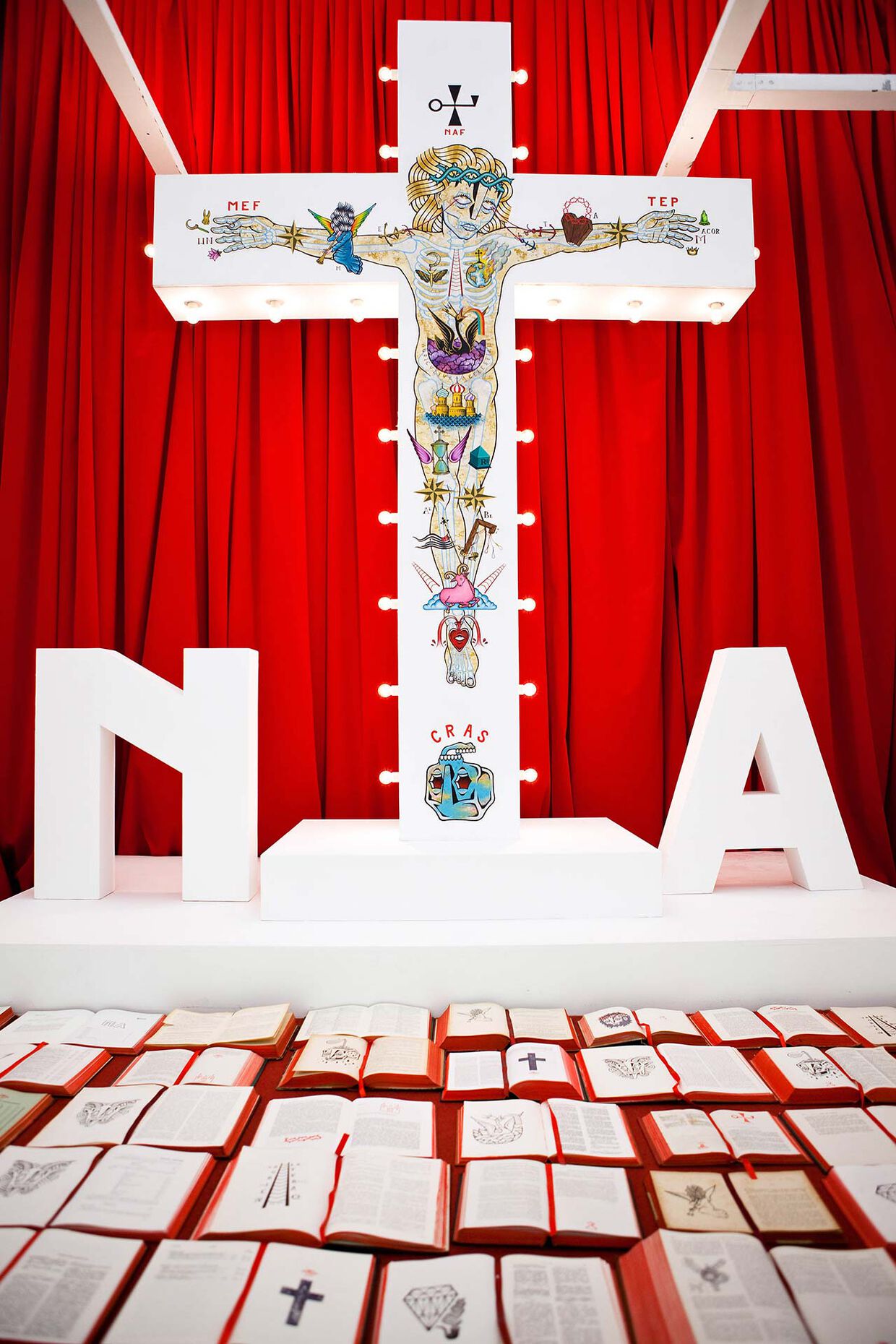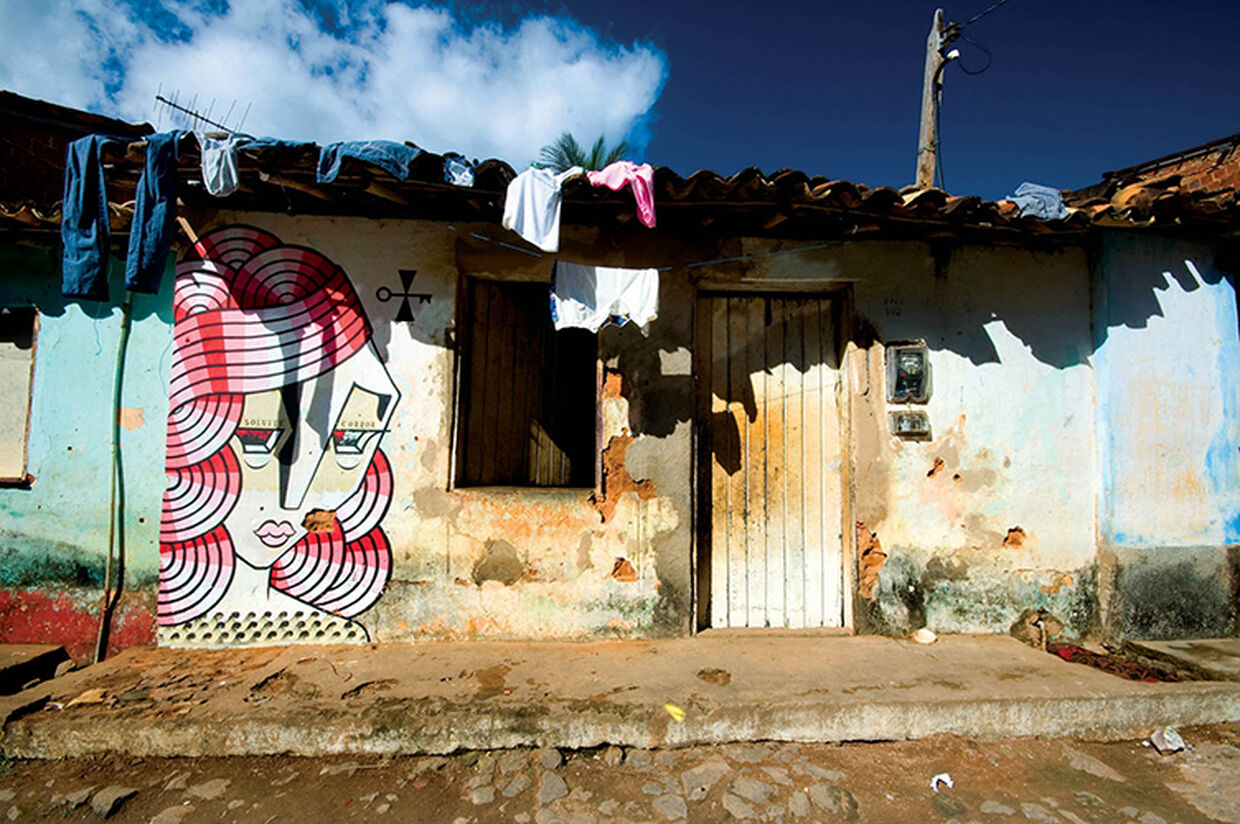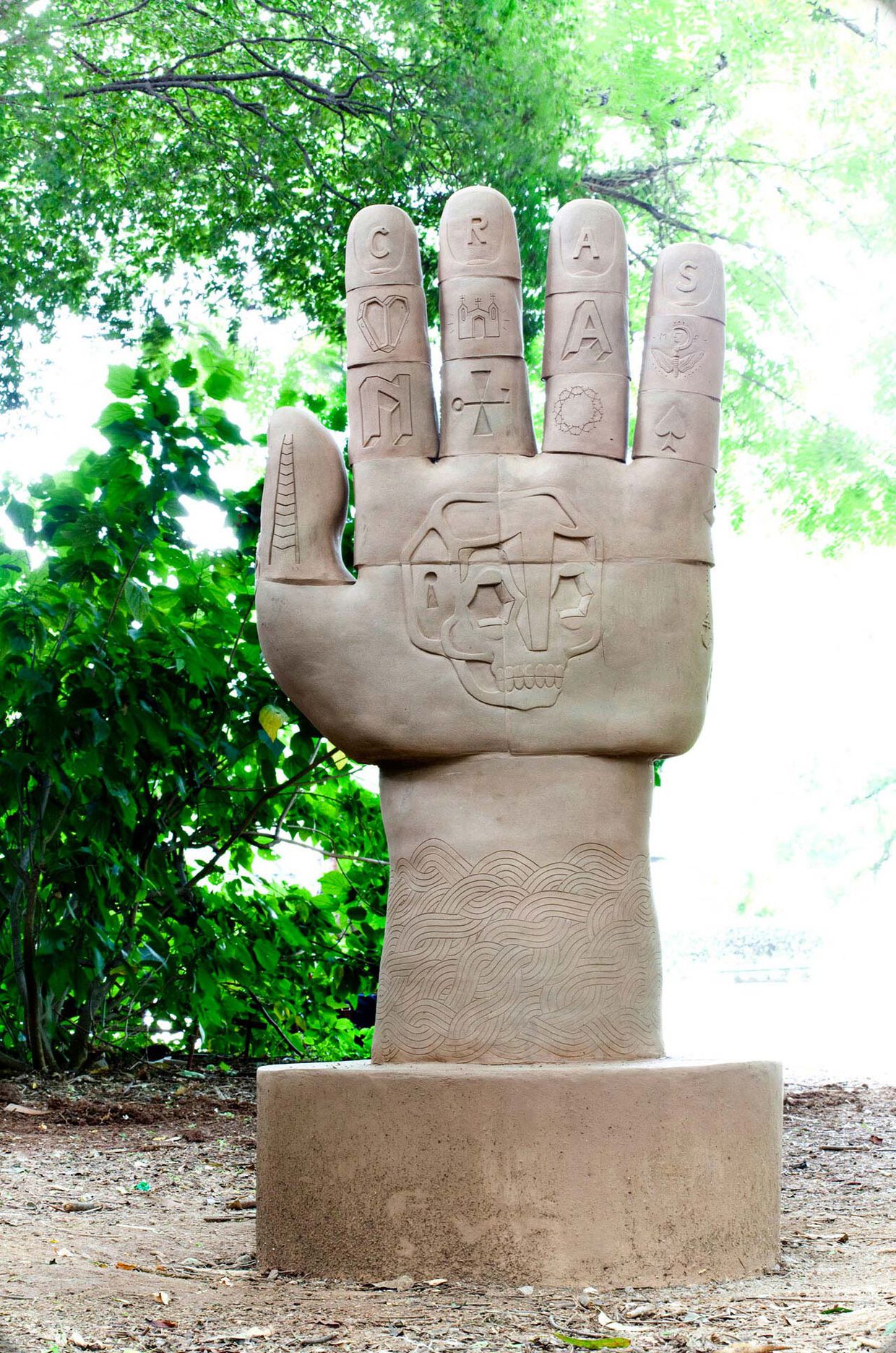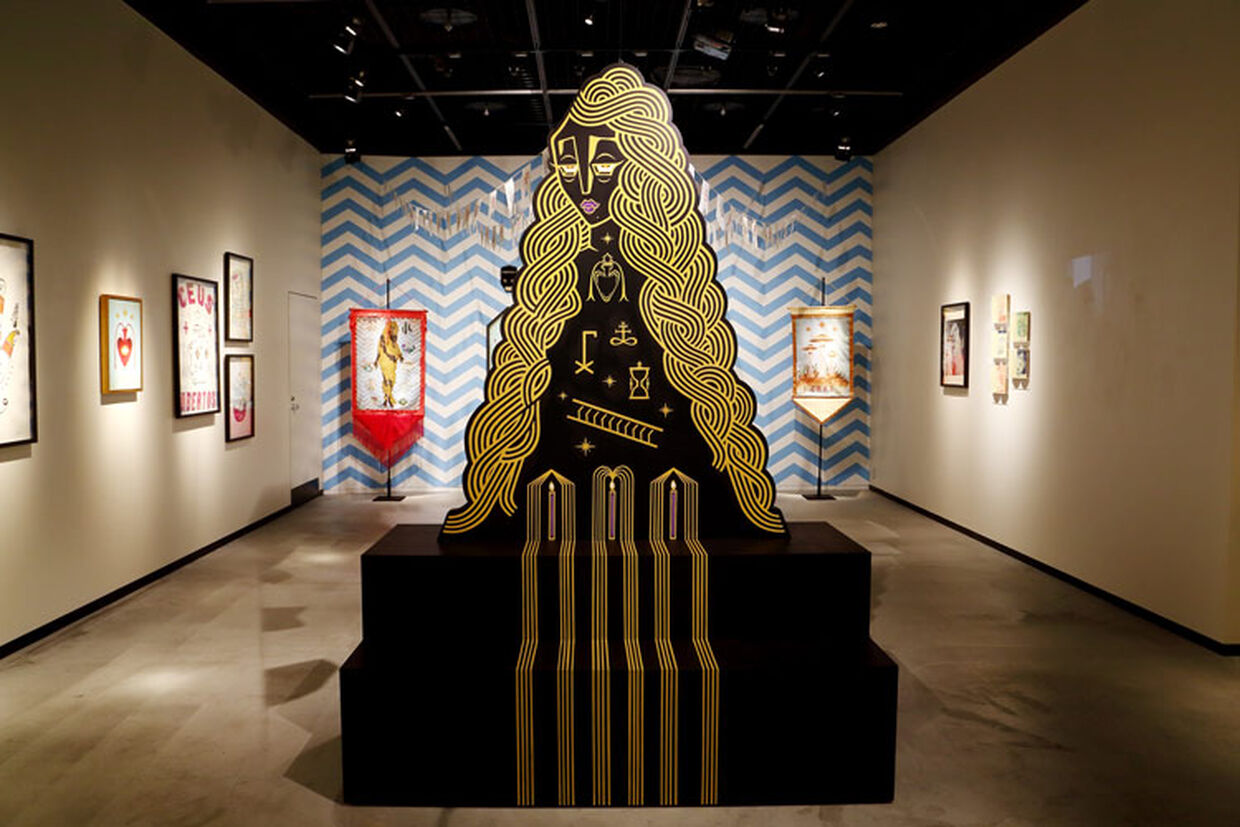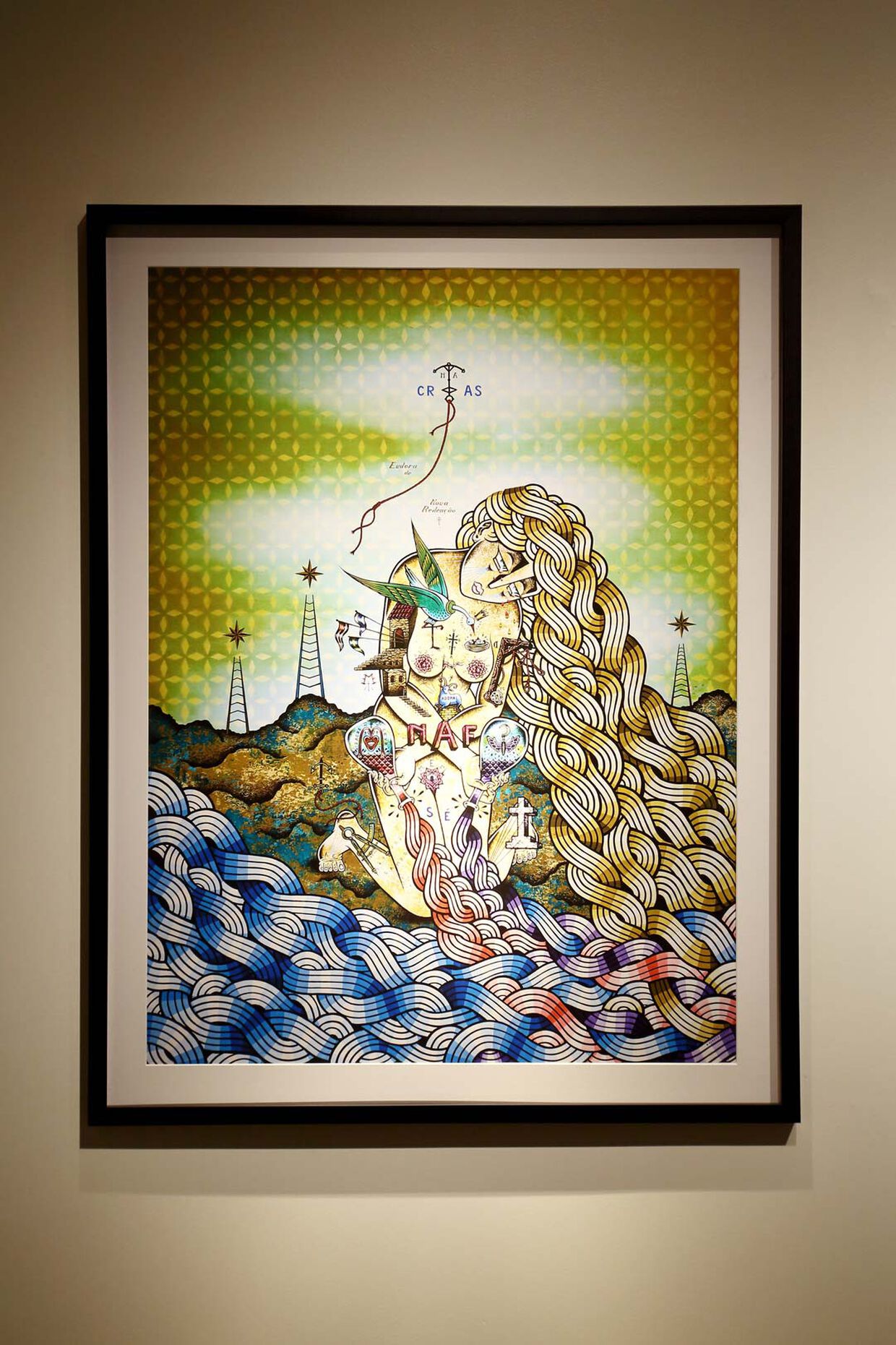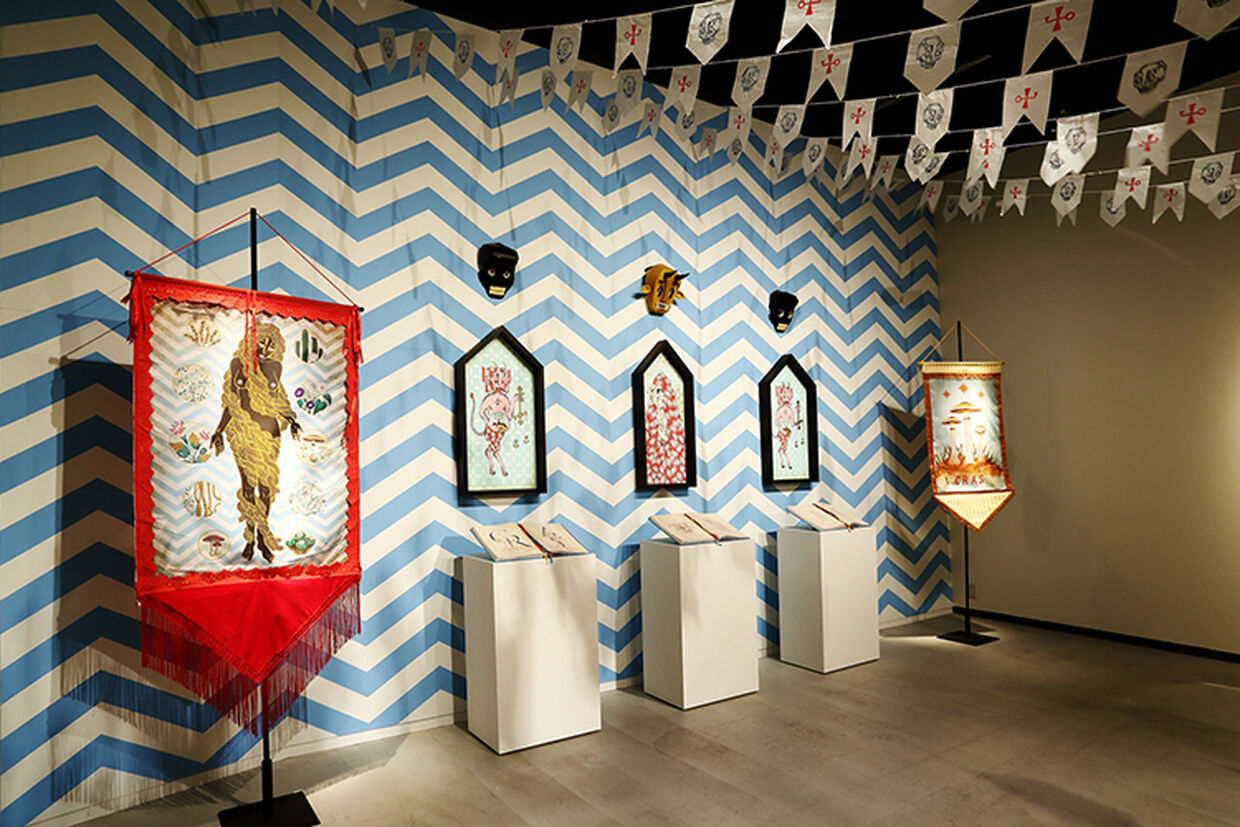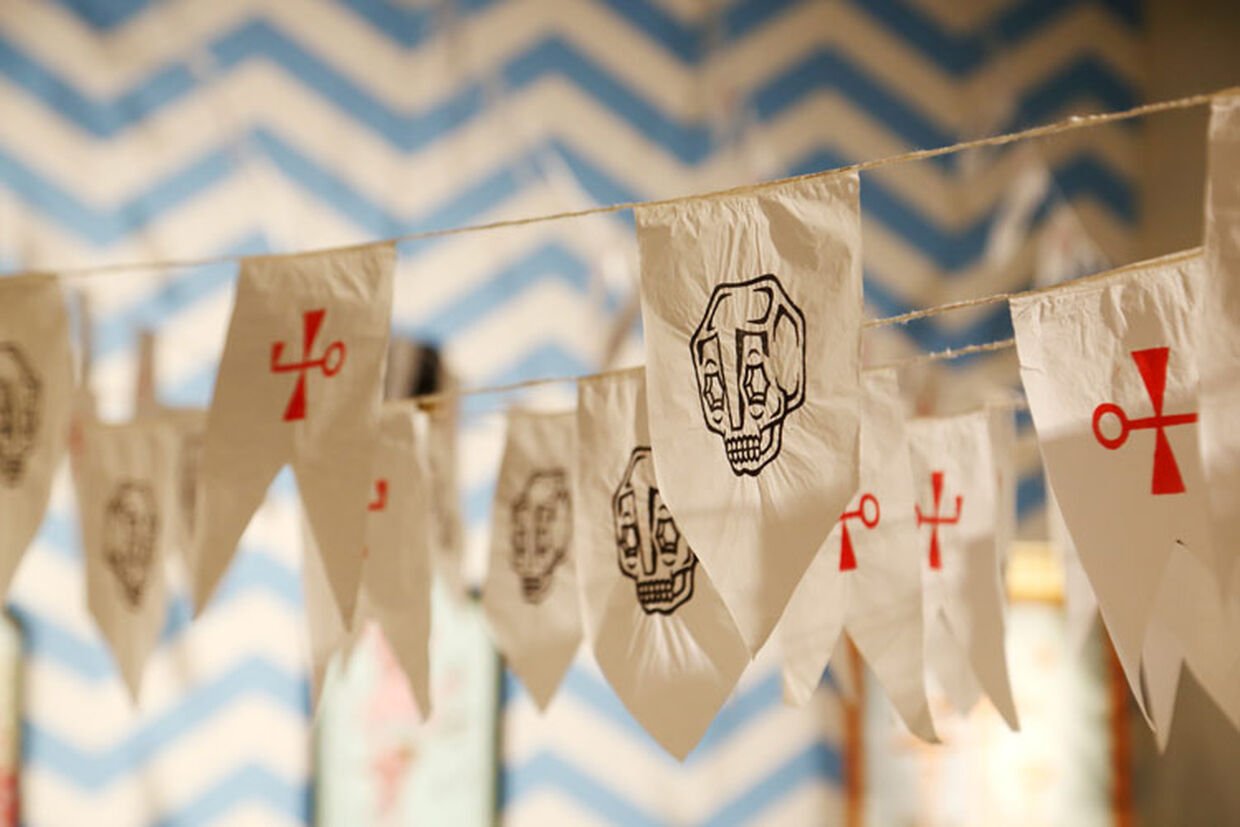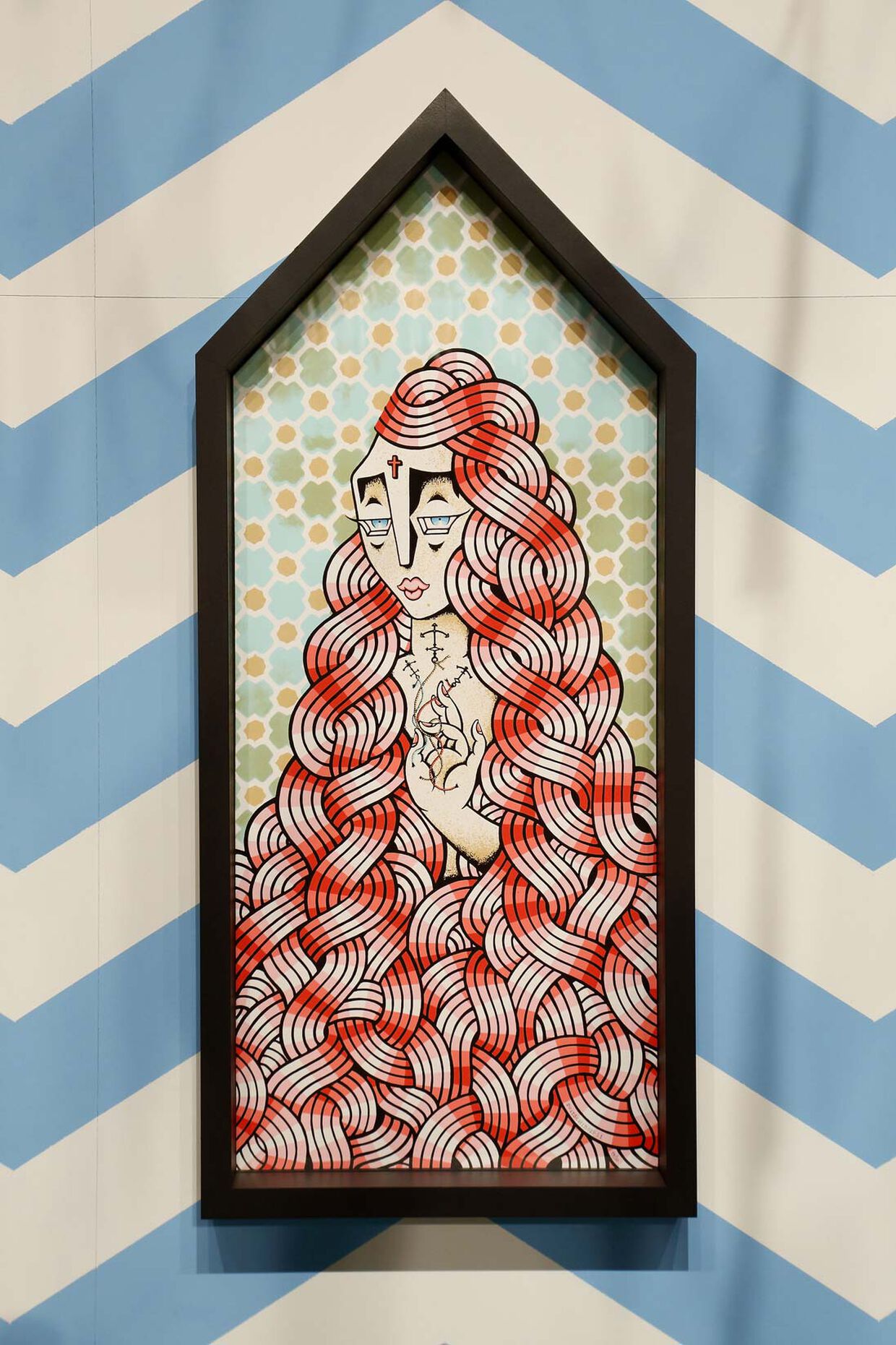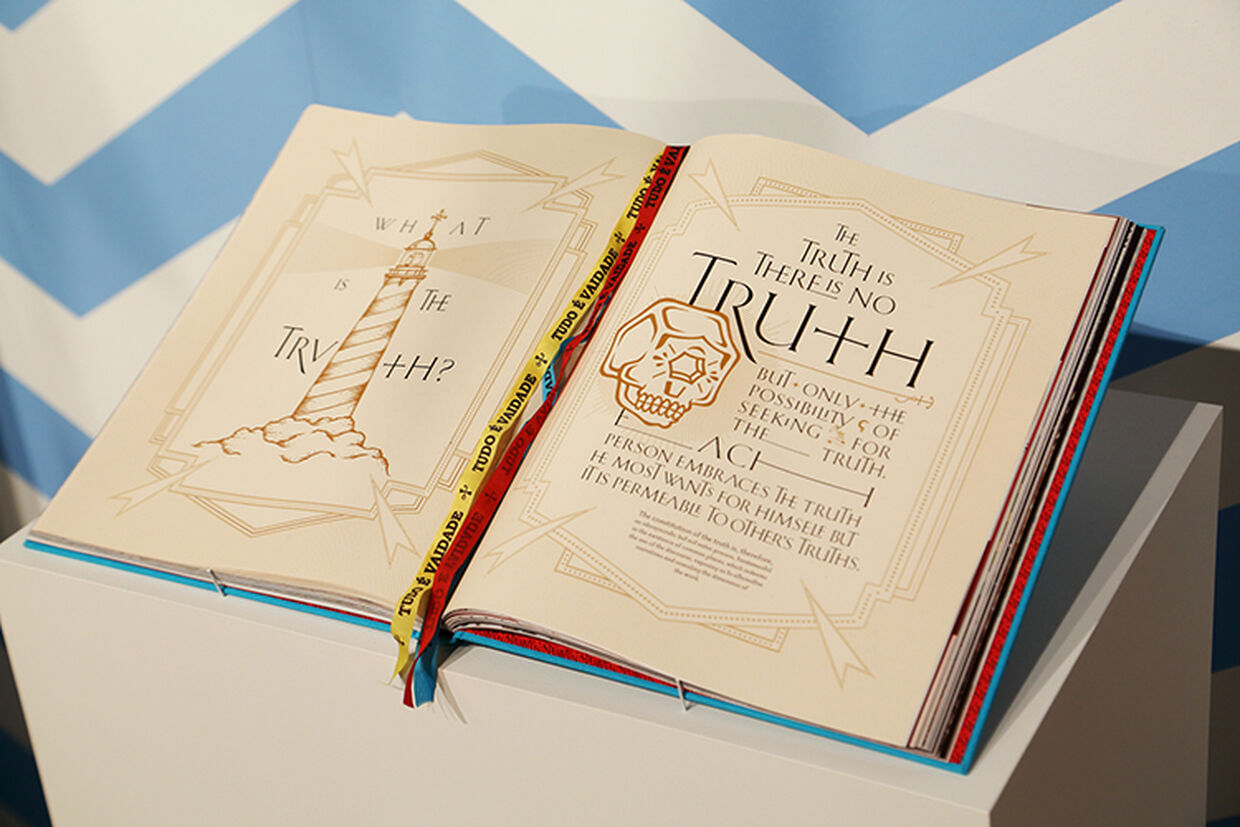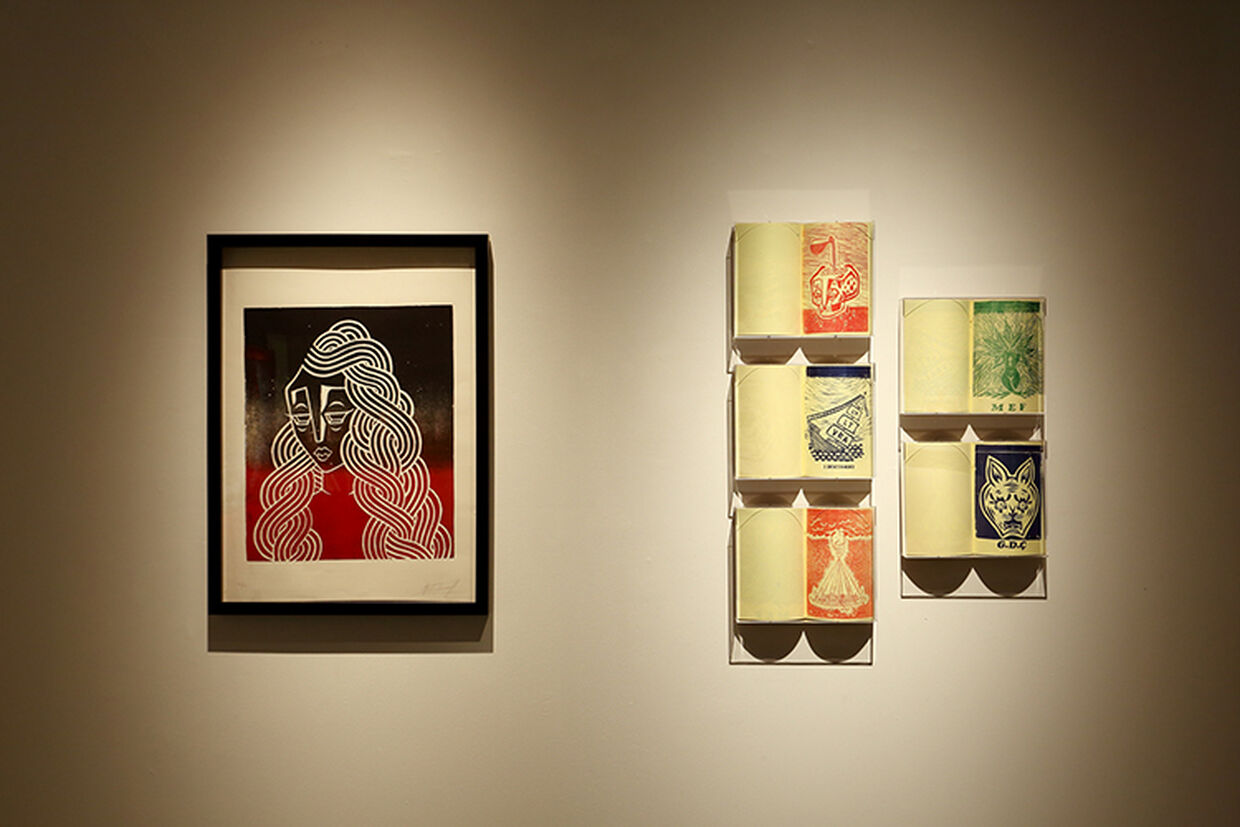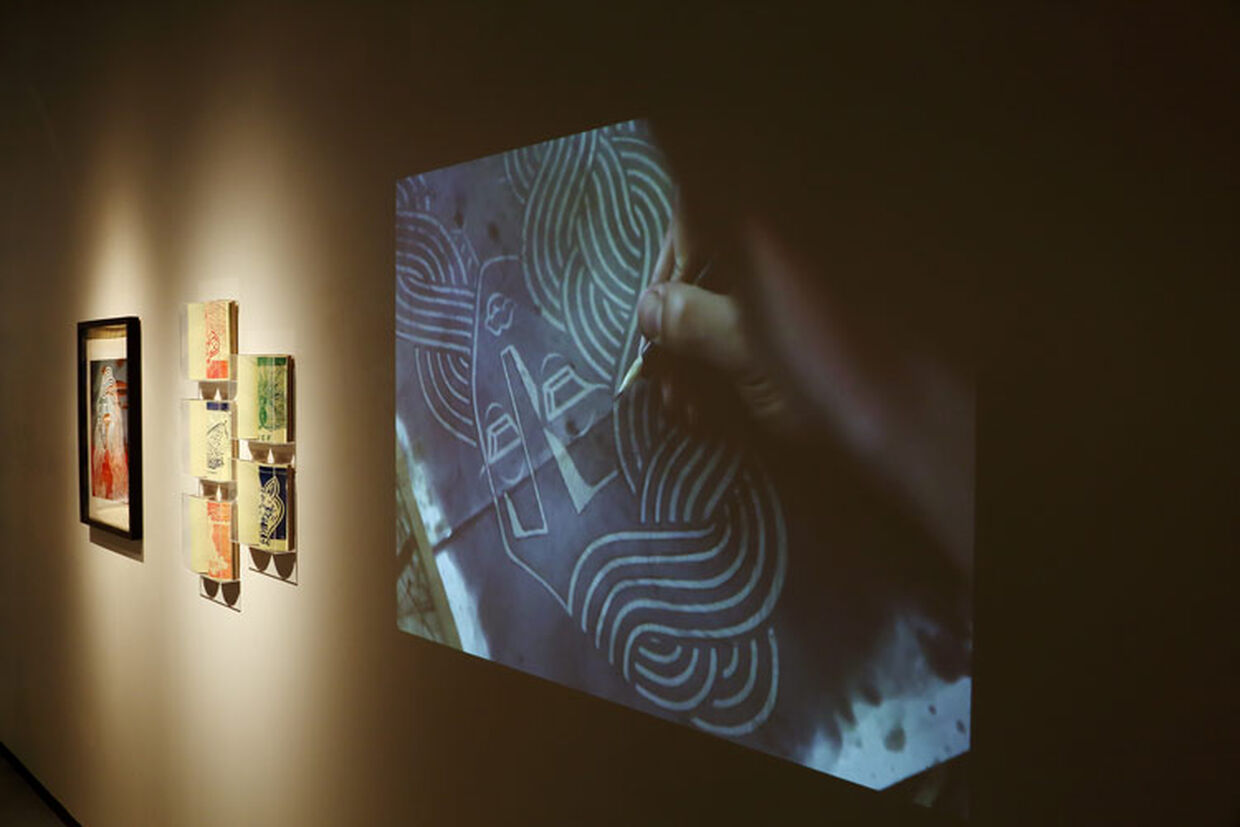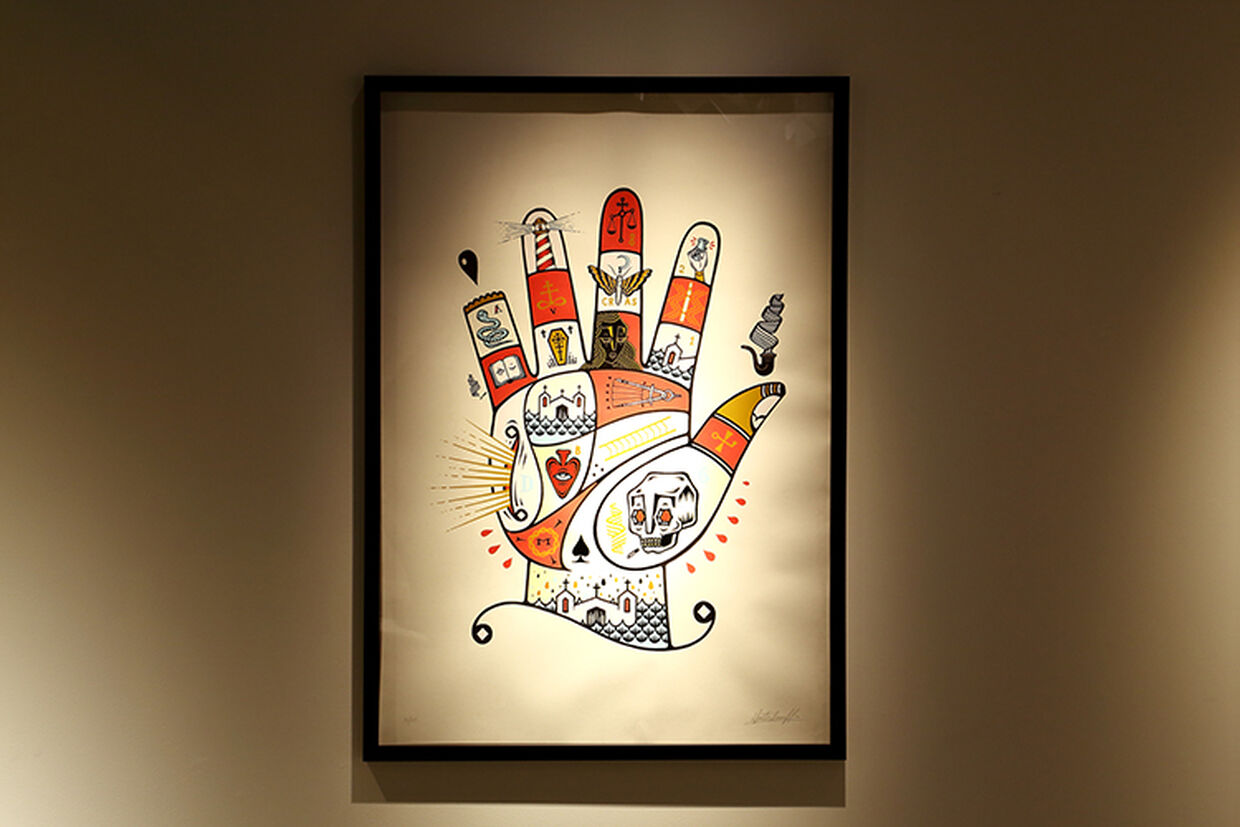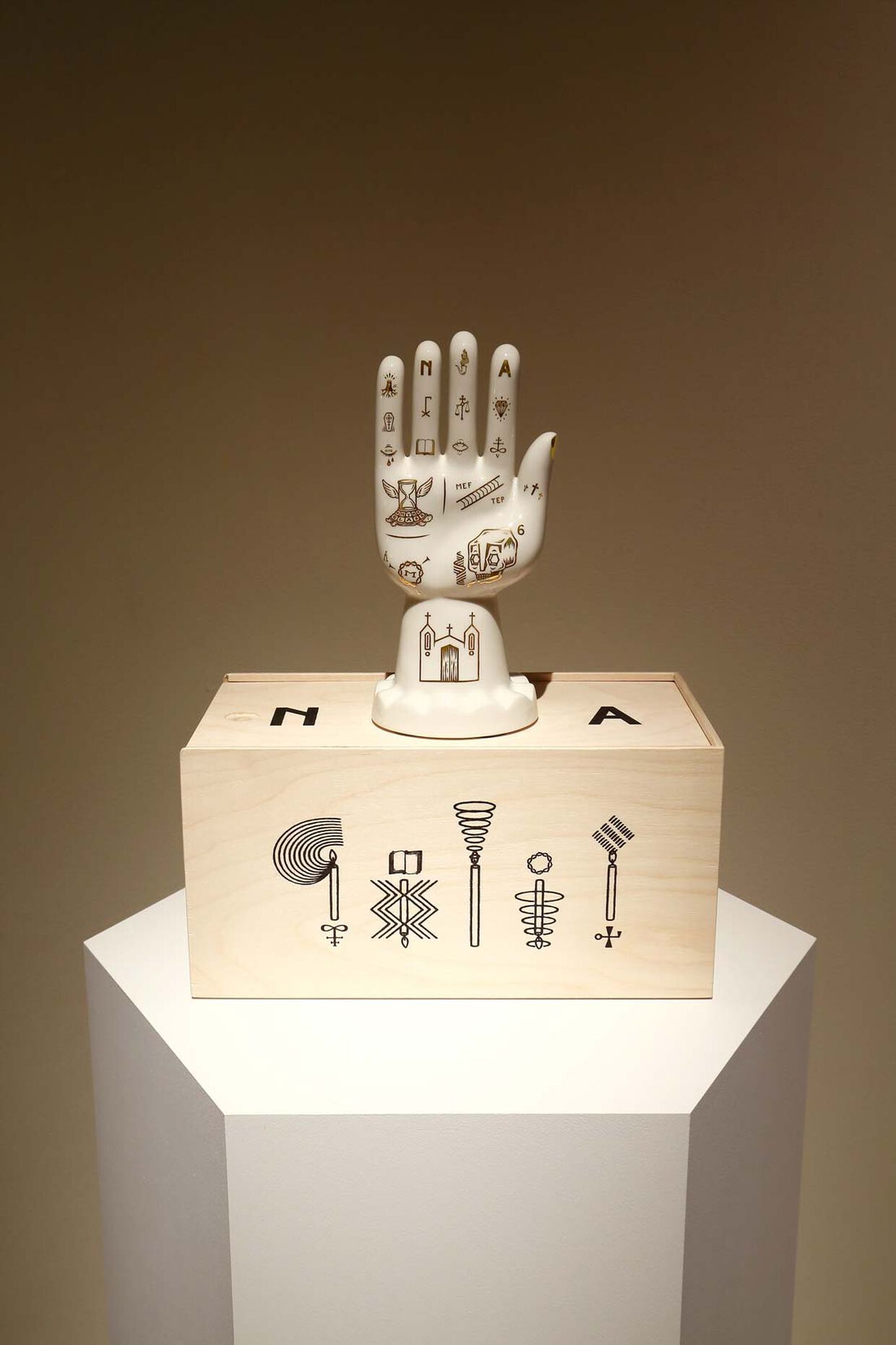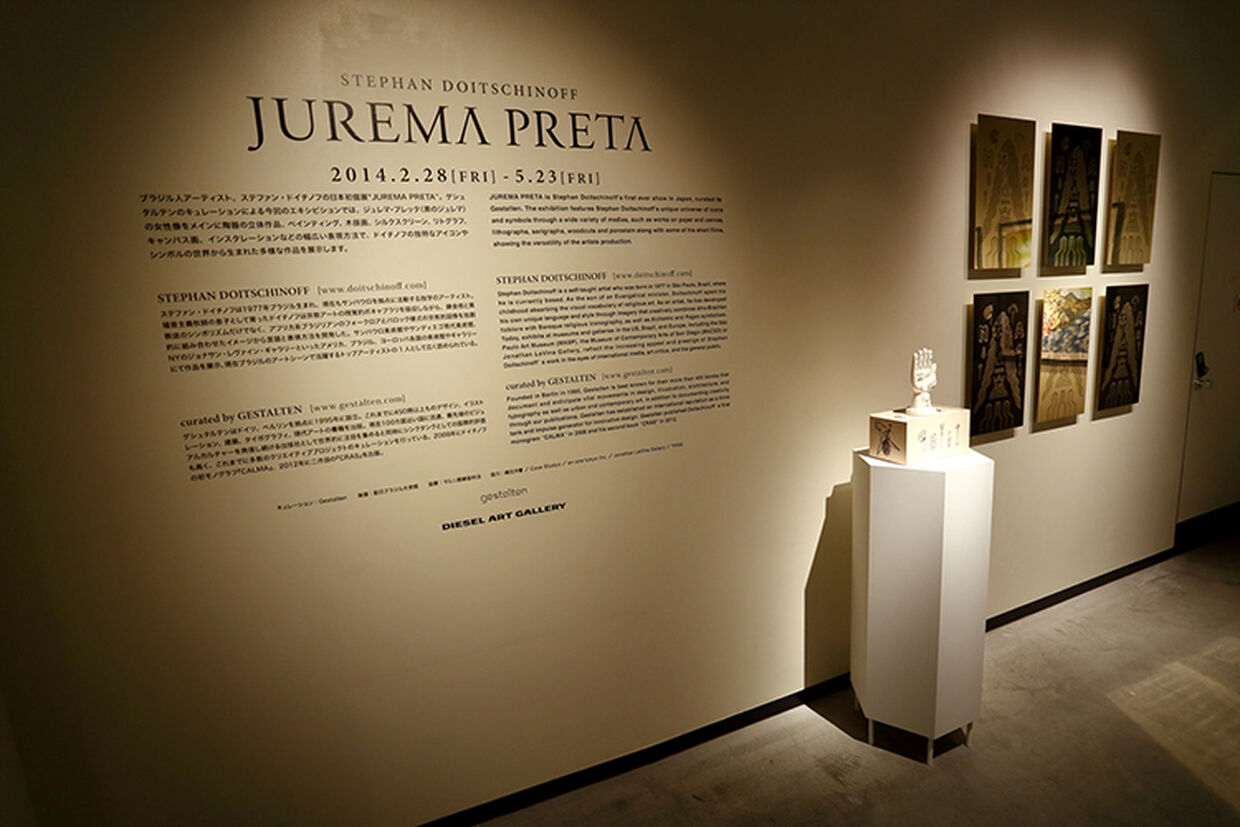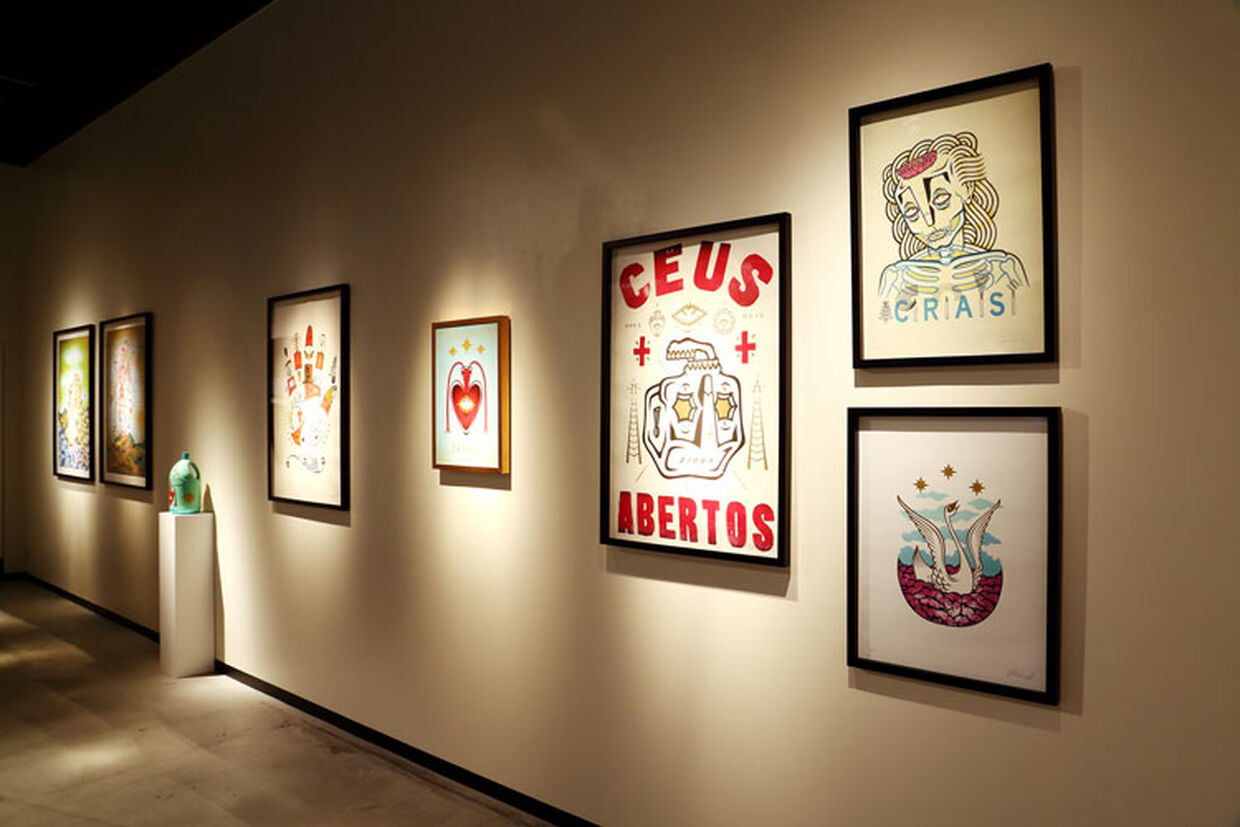-- Please introduce yourself.
Hi, my name is Stephan Doitschinoff, I am 37 years old. I am a brazilian born artist, based in São Paulo.
-- Please tell us about the concept of Jurema Preta exhibition and what do you think is the highlight of the show?
The concept of Jurema Preta exhibition is to show the wide range of media that I work with, from woodcut to serigraphy, hand painting, porcelain sculpture and video. And the highlight of the show is Jurema Preta installation that I designed, built and painted specially for this Diesel Art Gallery space.
--Please tell us about your usual process of making an art piece.
When I start painting, most of the time, I am not in the studio when I have an original idea. I am just like having a beer or ice cream, or hanging out with my friends on the beach or park. And I’ll just grab a piece of paper or my notebook, or napkins and sketch it really roughly. And then I go to the studio, I will sketch it better again in A4 size for example. And if it’s a human figure, a lot of time I ask for a friend or someone to be a model for me so that I can have more details. Then I enlarge a drawing to A2 size and I draw it again on transparent paper. And I enlarge it again to A0 size and I draw it again. And every time I enlarge the piece I add more details and layers, and I finally enlarge it again to the size of the painting. So most of my paintings, you will find at least four different sizes of drawing of that same painting. And each sizes are little bit different. So when I enlarge the drawing, it changes its content and design. So this is pretty much the process of making a drawing into painting size.
-- How do you usually get inspiration from?
I never have to worry about having writer’s block or anything like that. I always have inspiration. Most of the time, I am just thinking a lot about some subjects. Let’s see, 10 years ago, I thought about religion, how it really influences a society. So one of the things that I started working on was “hair.” Human hair, woman hair, I did the whole series of hair. As you know, you have different rules to cut or control your hair in different religions. So this is like one of my big inspirations. Today, I work much more with political subjects. So anything I am thinking about, anything that I see with my eyes becomes inspiration for my work. But it’s basically, a religion or politics are my main subject.
-- How did you become interested in art? And what made you decide becoming an artist?
Well, as a kid, I was always painting and drawing. And I was in a punk rock band, and I really thought that I was going to be a musician or cartoonist. I wanted to draw comics. I used to sing in this band because I couldn’t really learn how to play an instrument. Then I realized that I didn’t have good voice when we started recording. My voice sounded sucked even in a punk rock band. And I would lose my voice really quickly, so I started doing record covers for my own band instead, when I left, and for my friends bands in brazilian punk rock hard core scene. So that was the part of the beginning. Everything started from the music scene.
--Tell us about your monograph, "CALMA" and "CRAS". How did you hook up with Gestalten? And how did the book projects started?
The book“CALMA”tells a story of the project that I did in Bahia, called TEMPORAL. The project took me two years. I basically went to the countryside of Bahia, and I wanted to research about religious syncretism, folk art and religious art. And I wanted to do a big art, some site specific projects, like painting a big portion of town. So the “CALMA” tells a story of three years of my life from 2005 to 2008.
And the book"CRAS"features everything I’ve produced from 2008 to 2012, so it’s a collection of four years works. Both books include all my paintings, drawings, sculptures and installation works. I first started working with Gestalten when I was still doing lots of record covers back in the days. I used to do the record covers for Saves The Day, Sepultura and so on. And Gestalten featured my artwork on a music design book called "SONIC"Since then, Gestalten started featuring my artworks in their different compilation books. So when I decided to talk with publishing houses about publishing my monograph, Gestalten was my first one I went, and I had a straight yes from them, so I didn’t have to try any others. It’s been a great relationship since then.
-- As you know, some people have tattooed your artworks, drawn your artworks on their nails. How do you feel by seeing people inking your artworks to their bodies?
As for tattoo, it’s a big horror for me. I’ve seen my friends tattoing my work, and it happens all the time, so it’s really great. I saw my artwork on nails when I was in Japan. It was just amazing, so impressed by how detailed they’ve done. It’s awesome.
-- Did you ever had a chance to see an art scene in Japan? What was your impression?
Getting meet with usugrow and HAROSHI was really a nice experience.
--Do you have any artists or musicians that you admire?
My favorite artists are ESPO ( steven powers ), maurizio cattelan and manuel ocampo. My favorite trash metal bands are: Municipal Waste, Nuclear Assault, No Mercy. And my favorite pop singer is Lia Paris.
--You came to Japan for the first time, how was your stay? Tell us if there were anything that you became interested in or any things or places that you got inspired by.
Yeah, it was my first time in Japan. One of the things I was really interested in or noticed was mashup, or crossover between style of music or style of art. I don’t know but in America, in general, If you are Hip Hop, then you are Hip Hop. If you are punk rock, then you are Punk Rock. If you are into graffiti, then you belong to graffiti. In Japan, people are mixing freely and more easily tendencies and styles. Like this band we went to see other day, it was little bit mashup between hardcore techno, punk rock, cartoon and karaoke. You could feel all the influences melt up really well, and it was really good. I think this is one of the things most impressed me in Japan.
--Tell us about your upcoming projects.
Well, for my upcoming projects, I am going to do a mural project in Paris, and will do a solo show at Galerie L.J. (http://www.galerielj.com/). I am also working for my new show at Jonathan LeVine Gallery (http://jonathanlevinegallery.com/) in New York for next spring. I’ve been showing a lot in São Paulo, so I decided to do a few shows in other cities such as Tokyo, New York and Paris.
--Any message to people who are expecting to come to the show from now?
I think everyone coming to the show will be able to see a little bit of every dimension of my work, every techniques and styles that I work with. Try going look for my other films and videos that explain a lot of my process, how I build these pieces and artworks. I think you can really understand better of where I come from or how I develop my artwork.
Translated by Junko Hanzawa (Gestalten Japan)
